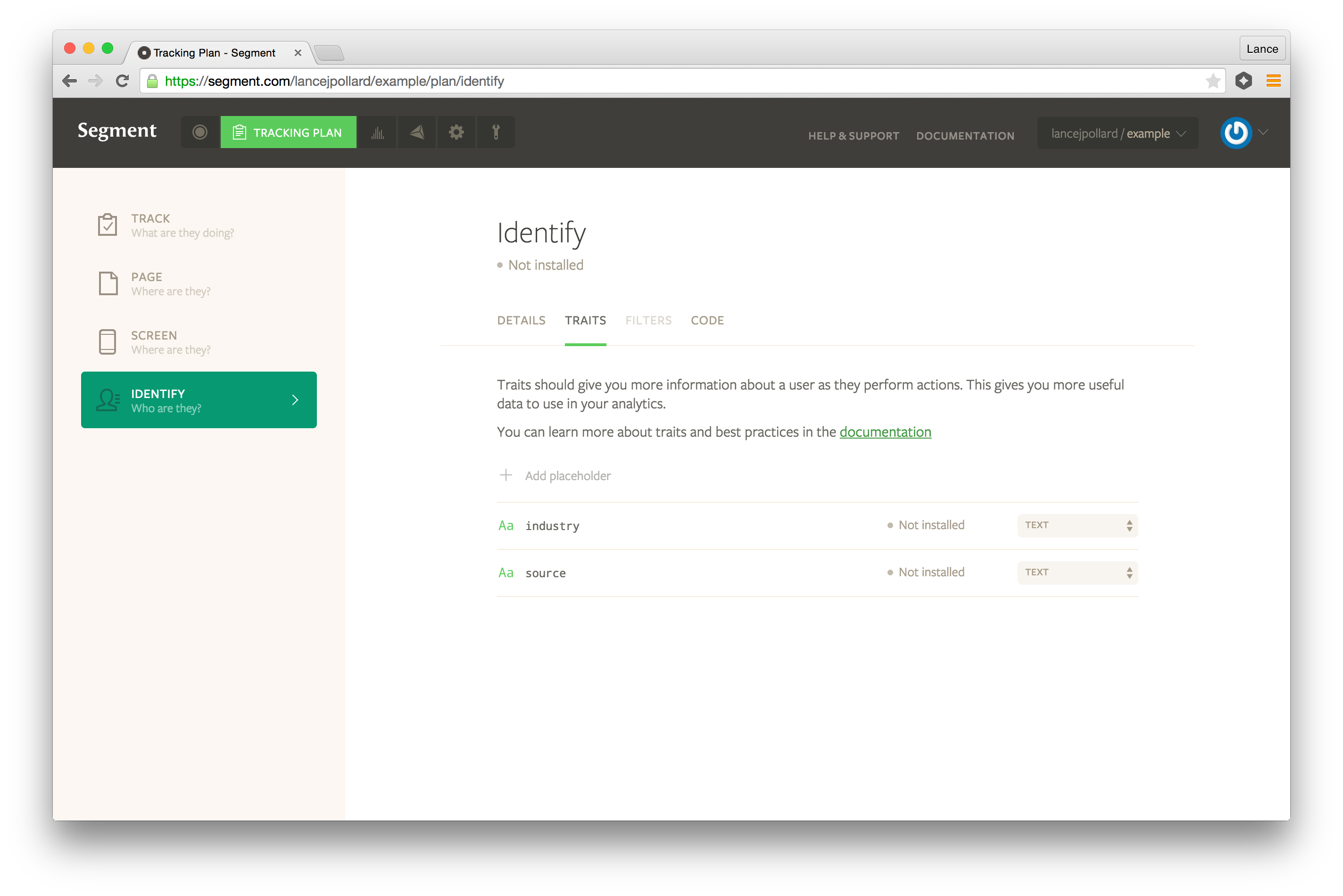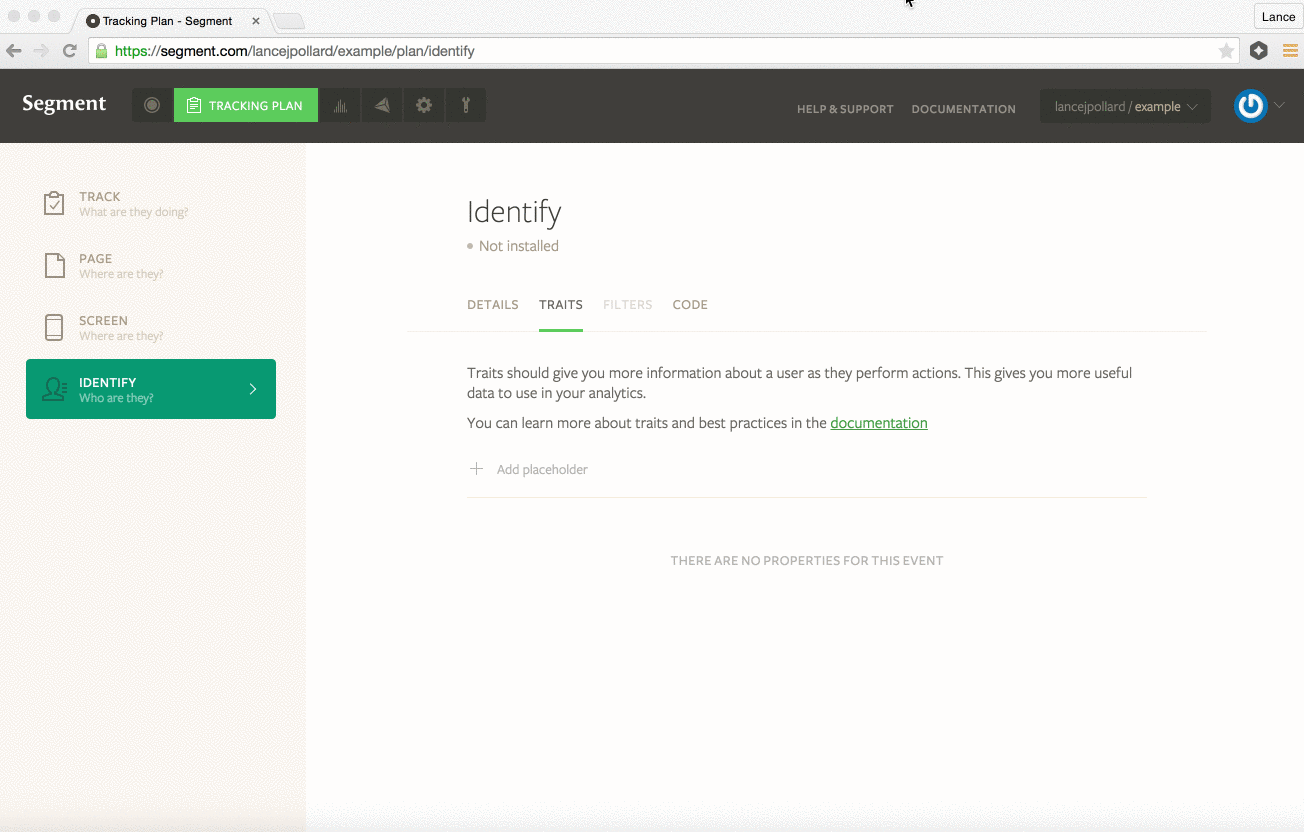See Your User Traits in One Place
May 21, 2015
By Lance Pollard
Note: Some of the features explained in this blog post have been deprecated. Tracking Plan is now called Schema and will only show data that Segment has received. The planning of new traits via the UI is no longer available.
If you’re using analytics, you’re likely capturing traits about each customer like their plan, email, and channel they came from. With the new Identify Page we’ve added to the Tracking Plan, now you can plan and view all of your user traits in one place.

Capturing traits
Collecting detailed traits means more fine-grained analysis, leading to better decisions on how to improve your product. For example, you might want to analyze your funnel conversions by what source a user came in from.
For those who are new to Segment, you can capture these user traits with our identify call:
If you’re implementing this in the browser, we recommend you fire this on every page load. This associates any subsequent analytics.track calls with that specific user id, for every integration you’re using. Here’s the details on the identify call.
Manually managing customer traits is hard
Capturing traits is helpful to analyze user behavior, but as you add more traits it’s hard to know what you’ve implemented and what else you’d like to start tracking. When going to analyze data in one of your analytics tools, you might not know what user traits you have to choose from, or even what they mean.
You’d have to keep track of it all in your head, or by looking through your source code, or if you’re like some of our customers, manage it all in a set of manually updated spreadsheets. This makes keeping everyone on the team in the loop a pain.
Now we handle this for you! Check out the Identify page in the Tracking Plan, it should hopefully make your life a lot easier. Here’s a quick run-through.

Tips for a faster workflow
The Identify section in the Tracking Plan gives you an overview of the user traits you currently track and plan to track. You can add new traits to sort-of spec out what your dev team should implement. You’ll know that the trait has been implemented when the status light turns green.

If you’re just starting to implement identify, you can:
Add a few customer traits you want tracked (type their name and press enter)
Click the “Code” tab and copy/paste the dynamically generated code snippet into an email to your dev team and fire away!
Here’s where the code is:

That’s all for now! Just wanted to let you know that there’s a much more integrated way of implementing identify calls in Segment now. This should hopefully provide a lot more visibility into the process of planning and collecting user traits.
Cheers.
The State of Personalization 2023
Our annual look at how attitudes, preferences, and experiences with personalization have evolved over the past year.
Get the report
The State of Personalization 2023
Our annual look at how attitudes, preferences, and experiences with personalization have evolved over the past year.
Get the report
Share article
Recommended articles
How to accelerate time-to-value with a personalized customer onboarding campaign
To help businesses reach time-to-value faster, this blog explores how tools like Twilio Segment can be used to customize onboarding to activate users immediately, optimize engagement with real-time audiences, and utilize NPS for deeper customer insights.
Introducing Segment Community: A central hub to connect, learn, share and innovate
Dive into Segment's vibrant customer community, where you can connect with peers, gain exclusive insights, and elevate your success with expert guidance and resources!
Using ClickHouse to count unique users at scale
By implementing semantic sharding and optimizing filtering and grouping with ClickHouse, we transformed query times from minutes to seconds, ensuring efficient handling of high-volume journeys in production while paving the way for future enhancements.